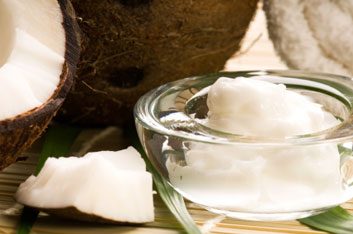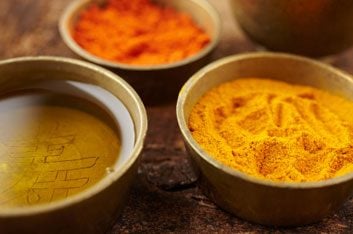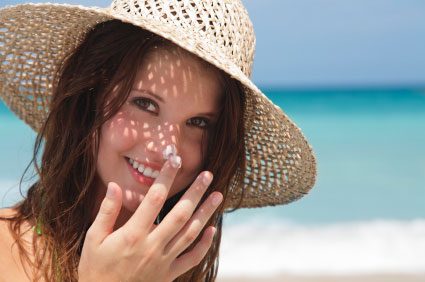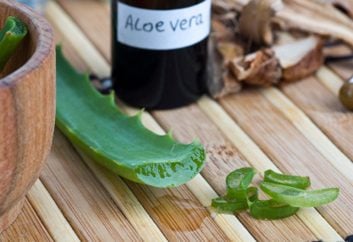
Is sunscreen safe?
Conflicting information about sun protection can be confusing. We know the sun’s harsh rays can cause skin cancer and premature aging, and we’re constantly reminded to wear sunscreen. Conversely, studies suggest conventional sunscreen may actually be harmful.
Unfortunately, staying out of the sun isn’t really an option when harsh winters leave us stuck inside the rest of the year.
So what’s a health-conscious (and summer-loving) Canadian to do? Luckily, there are options.

Protective clothing
According to Washington D.C. based non-profit Environmental Working Group’s website, “The best sunscreen is a hat and a shirt.” Why? Because it means “No chemicals for the skin to absorb,” and “no questions about whether the product works.”
It’s even better if the clothing has a high UPF (Ultraviolet Protection Factor), says Toronto-based dermatologist Dr. Lisa Kellett, which ranges from 15 (good) to 50-plus (excellent).
“Three things you can use to protect yourself from the sun are a hat, shade and sun protective clothing with a UPF of 50 or higher,” she says. “The hat should have a broad brim of at least five inches to protect the neck and chest area, especially for women. It should also have a UPF.”
Before you go out and purchase a high-UPF bikini, be warned that it won’t do much to protect the rest of your skin. Instead, opt for a something with more coverage that is still stylish.
Try Australian company Coolibar’s Ruche Swim Shirt (it has a UPF of 50+) for a day at the beach. For a patio date, pair Ex Officio’s Sleeveless Sun Dress (UPF 50+), with a chic and fashionable sun hat for a European look.

Plant oils
According to a 2011 study published in Pharmacognosy Reviews, some plant oils contain natural sunscreens. “Sesame oil resists 30% of UV rays, whereas coconut, peanut, olive, and cottonseed oils block out about 20%,” the study’s authors wrote.
While research shows that some oils may protect skin, it’s important to keep in mind that they’re not regulated, warns Dr. Kellett. “There is no standardization. How thick do they have to be? What’s the formulation? What’s the absorption of the product? What are the sun protective properties?”
Ruchi Shetty, a naturopathic doctor based in Toronto, doesn’t recommend using oil alone. “If you’re going to use oil, mix in sandalwood or zinc,” she says.

Sandalwood paste
“Sandalwood paste is an ancient remedy that can be used as sun protection,” says Shetty. “You can find it in powder form at ayeurvedic or Indian stores. Just mix it with water to make a thin paste and apply. You can also mix it with your own natural face cream, so its dark colour isn’t as obvious.”

Natural sunscreens
“I don’t recommend conventional sunscreen, but there are some good alternatives,” says Shetty. “Brands that use zinc oxide are good, because they provide a physical barrier, rather than a chemical barrier. As soon as you introduce chemical barriers, they’re introduced into the body and can be harmful.”
Environmental Working Group analyzed hundreds of sunscreens to determine which products are the safest when it comes to sun protection.
They recommend sunscreens with broad spectrum (UVA and UVB) protection but fewer hazardous chemicals that penetrate the skin. All the products they suggest contain either zinc or titanium minerals to filter UVA rays.
Try UV Natural’s SPF 30+ Sport, which combines zinc oxide with sandalwood, grape seed oil and antioxidants for optimum sun protection. Unlike other zinc sunscreens, it doesn’t look ghostly white and blends well. Badger Balm’s SPF 34 is another good option. It’s lightly scented with lavender and combines zinc with olive oil, beeswax and jojoba and cocoa butter. Both options leave out added chemicals that could potentially be harmful.

After being in the sun
“Even if you don’t have a burn after sun exposure, it’s important to cool down,” says Shetty. She recommends applying coconut oil, as “it’s cooling.” Another option? “Keep an aloe vera plant at home. A lot of conventional aloe products contain other things that you don’t want to put on your skin.” Break open the leaves and apply pure aloe without the added (and unwanted) ingredients.
Did you get a little too much sun? “Sesame oil can also be affective for burns,” she says.
Related:
• 10 sunburn-soothing tips
• 5 foods that fight sun damage
• Fashion: Chic hats that double as sun protection
